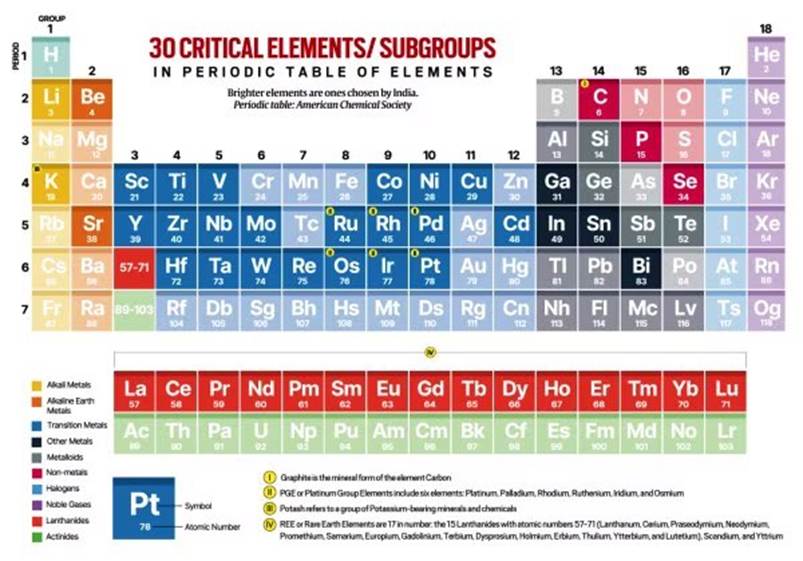Why in News ?
The Union Cabinet approved new royalty rates for critical minerals — graphite, caesium, rubidium, and zirconium — to promote auction and domestic mining of these strategically vital resources essential for EVs, semiconductors, and renewable energy technologies.
Relevance : GS 3 – Economy / Science & Tech / Environment
- Critical Mineral Security and Supply Chains
- Government Policies for Mineral Development
- Sustainable Mining and Resource Efficiency
Background
- Critical minerals are those essential for economic and national security but with high supply chain vulnerability due to import dependence.
- India currently imports many such minerals, especially from China and Africa, leading to strategic risks.
- The Mines and Minerals (Development and Regulation) Act, 1957 empowers the government to fix royalty rates.

New Royalty Structure (Approved by Cabinet, Nov 2025)
| Mineral | Previous Royalty Basis | New Royalty Rate | Rationale |
| Graphite (<80% carbon) | Per tonne basis | 4% of Average Sale Price (Ad valorem) | Encourages transparency and revenue alignment with market price |
| Graphite (≥80% carbon) | Per tonne basis | 2% of Average Sale Price | Supports high-quality domestic production |
| Caesium | Not previously specified | 2% of Average Sale Price (based on contained metal) | Promotes exploration; essential for atomic clocks, oil drilling fluids |
| Rubidium | Not previously specified | 2% of Average Sale Price (contained metal) | Used in electronics, photoelectric cells |
| Zirconium | Not previously specified | 1% of Average Sale Price | Used in nuclear reactors, ceramics, alloys |
Significance
- Facilitates Auctions: Enables transparent and predictable bidding for new mineral blocks under the auction regime.
- Promotes Domestic Production: Reduces import dependency in critical sectors like electronics, defence, clean energy.
- Boosts ‘Critical Mineral Mission’: Supports India’s efforts under the National Critical Minerals Strategy (2023).
- Investor Confidence: Ad valorem basis ensures royalty linked to actual market value, not fixed rates, improving fairness.
Challenges
- Limited Exploration: Geological Survey of India (GSI) data indicates India’s limited reserves for rubidium and caesium.
- Environmental Clearances: Mining of rare minerals often faces regulatory and ecological hurdles.
- Supply Chain Integration: Domestic extraction must be matched by refining and processing capacity.
Global Context
- India is aligning with global efforts by countries like Australia, the U.S., and Japan, which are building critical mineral supply alliances to reduce dependence on China.
- The India-Australia Critical Minerals Investment Partnership (2023) aims to secure key inputs for energy transition technologies.
Way Forward
- Expand exploration under NMET (National Mineral Exploration Trust).
- Encourage public–private partnerships in critical mineral value chains.
- Integrate with PLI schemes for EV batteries and electronics to create end-use demand.
- Strengthen recycling and circular economy for rare minerals.



